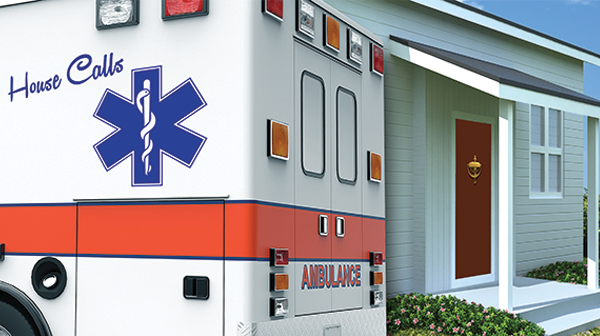
- “Mrs. A is back with her CHF. She was discharged yesterday, but she didn’t have a ride to go get her prescriptions filled.”
- “Mr. B is hearing voices again. They say it is cold outside, and he is hungry.”
- “Mrs. C is dying and with hospice. The family called her doctor when she started having trouble breathing, and the recording told them to call 911 if it was an emergency.”
- “Miss D is here because she wants to get off of drugs.”
- “Mr. E could go home, but he lives alone. I guess we will have to admit him.”
Every one of the hypotheticals above represents a case in which someone has fallen through a gap in our health care system. Successful 21st-century health care systems must provide continuous care across all aspects of inpatient and outpatient care from cradle to grave. Mobile Integrated Healthcare Practice (MIHP) is a growing and evolving practice of medicine that incorporates new and existing resources in the out-of-hospital environment in an effort to remedy the multitude of discontinuities that exist in our health care system. Some call this “community paramedicine.” While accurate to describe some systems, this discounts the enormous variety and potential of MIHP around the country and across the whole spectrum of providers and patients.
Explore This Issue
ACEP Now: Vol 34 – No 06 – June 2015
Powerful motivation exists for hospitals to develop care networks and teams of providers working collaboratively in the prehospital, in-hospital, posthospital, and clinic environments to help patients better participate in their care, smoothly navigate the system, and enjoy healthier and longer lives. We are seeing rapid consolidation of practices into bigger systems, but we have not effectively identified a way to handle the transition between different settings. There are gaps created by timing of discharges, availability of follow-up, communication failures between in-hospital and out-of-hospital physicians, legal barricades, high demands on outpatient practices, geographic distances, provider shortages, access to care, and, more generally, 24-7 needs in a nine-to-five world. Failure to address these gaps breeds increased length of stay, increased 30-day readmits, decreased patient experience of care, and, at worst, progression of disease or death.
Pages: 1 2 3 | Single Page




One Response to “Opinion: Mobile Integrated Health Care Practice Can Bridge Gaps in System”
June 28, 2015
Mike Wilcox,MDI have been heavily involved in training many of our skilled paramedics to become Community Paramedic Certified. The State of Minnesota is vested in using this Provider to assist in filling gaps where access to health care is a problem. Since 2007,I have provided Medical oversight and continue to be involved in training, certification, and the PI process. As you embark upon such a program, I would suggest that you use a uniform curriculum, housed in an academic setting, where credits can be obtained to achieve a degree. This avenue of study has given some of our seasoned Paramedics a new choice of career path in the area of Primary Care. An academic base has led to a higher level of acceptance by other members of the healthcare team.
Mike Wilcox,MD